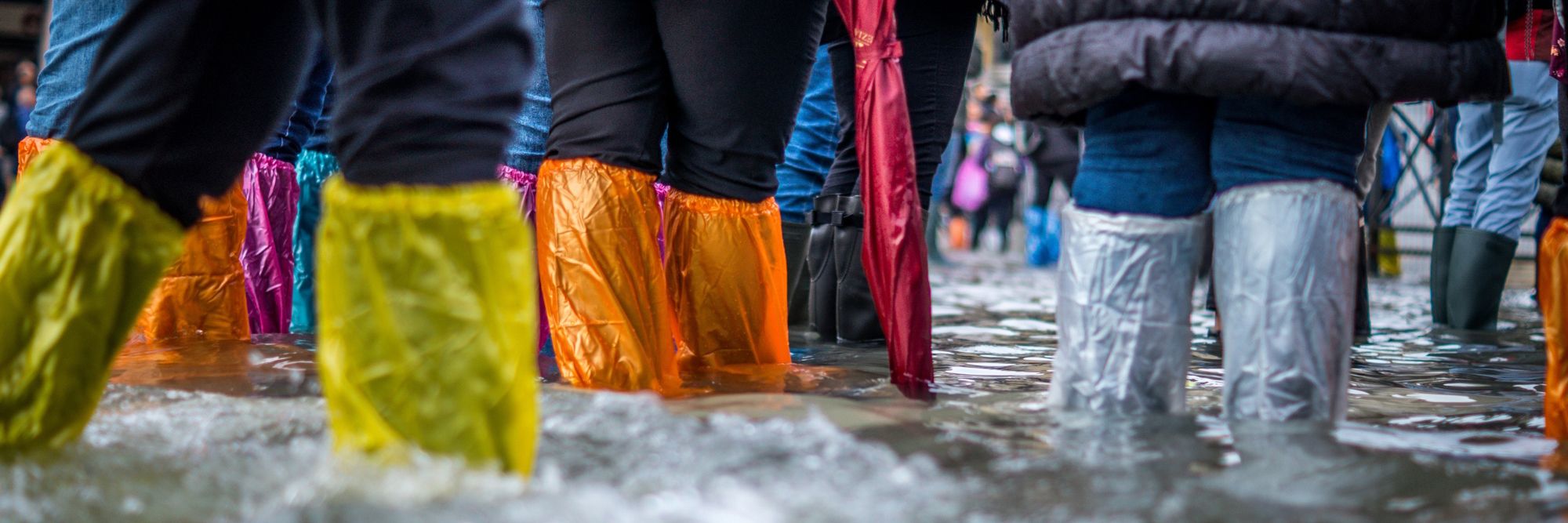Six team members from AI consulting firm Xomnia have participated in the AI for Earth 2 - Inland Floods Prediction challenge, organized by the AI-for-good community FruitPunch AI in cooperation with Vortex.io and Space Hub Network. They delivered the blueprint of an ARIMA-based model that can make highly accurate predictions about the likelihood of flash floods happening in the short term (within 6 hours).
As floods and landslides continue to pose a bigger threat worldwide due to climate change, models that help in predicting those phenomena will play a bigger role in saving lives. If accurately implemented, the predictive model delivered by Xomnia’s team has the potential to deliver valuable short term predictions, especially to populations in small towns that lack the necessary alarm infrastructure. Moreover, the model can be easily generalized to other rivers, as it only uses data from the sensors provided by Vortex.io, and does not require other data sources (e.g. weather forecasts, satellite imagery or hydrological data).
“The model can trigger alarms that can be shared via mobile notifications or other alarm systems adopted by local governments,” explained Agustin Iniguez Rabago, one of Xomnia’s machine learning engineers who participated in the hackathon.
Xomnia’s Machine Learning Engineers George Gkenios, Kiki van Ronge, Pavlos Skevofylax, Sabrina Wirjopawiro and Samantha Biegel also participated in the 10-week-long hackathon. Our Analytics translator Inbal Shofty, joined the team as its product manager.
The challenge
Vortex.io, a French startup focusing on innovative, real-time hydrological data service, is interested in exploring the possibilities for building a flood prediction model using data from their sensors. The model can be used in alarm systems to better warn different communities in advance in case of upcoming floods.
To help the participants in the challenge in developing the model, Vortex.io provided data about water heights along multiple rivers in France, such as the Garonne river and the Aude rivers, within a timeframe of approximately 5 minutes. In addition to this, the participants had access to open data of the same rivers provided by the French government.
“We started by processing and analyzing this data, and trying to understand the role of different influences on it, such as proximity to the ocean, altitude and temperature,” said Agustin. “We chose to focus our flood prediction efforts on data from Toulouse and Marmande, which suffered from the highest amounts of floods this year.”
Following data processing and analysis, Xomnia’s team started testing the different types of models that will best suit the flood prediction use case, including the ARIMA (Autoregressive Integrated Moving Average) model, the Prophet model, and the LSTM (Long Short-Term Memory) model.
The solution
After comparing the pro’s and con’s of each model, Xomnia's team decided to go for the simple, linear ARIMA model, since it gave the most accurate short-term predictions. Moreover, even though its long-term capabilities were quite limited, ARIMA’s long-term predictions were not inferior to those of other models.
Our team fine-tuned the code of its predictive model, achieving accurate predictions within a 10cm range on average, up to 6 hours in advance, and scoring an error margin of less than 10%.
“Even though it starts deviating in its predictions for longer periods, we are capable of addressing this issue in the future with the necessary resources to advance the model,” added Agustin.
They also prepared a guide on how to use the code to allow Vortex.io to use it in their day-to-day applications. This is part of Xomnia's goal to facilitate Vortex.io’s efforts to create a cloud infrastructure that they can use to deploy their predictive models.
“The ultimate outcome is to upload the code to Vortex.io’s cloud and connect it via an API to a certain alarm system,” explained Agustin. “When the model has a reason to predict an upcoming flood, the alarm system will be triggered, sending off warnings via a mobile app.”
This is the third FruitPunch AI challenge that Xomnia’s machine learning engineers participate in, and the first since Xomnia partnered up with the AI-for-good community.


